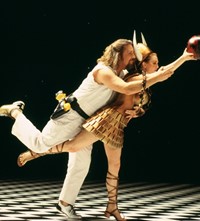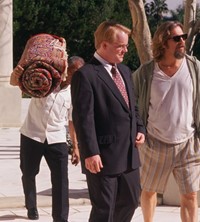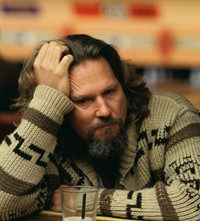As The Big Lebowski turns 20 and hits cinemas once more, Mary Zophres reveals the stories behind the film’s eccentric ensembles
- TextDaisy Woodward
It’s hard to believe that it’s been 20 years since the Coen brothers brought us The Big Lebowski – the tale of Jeff “the Dude” Lebowski, an LA slacker and bowling fanatic whose seemingly all-too-common surname finds him swept up in an epic case of mistaken identity. Kidnapping, carpet soiling, psychedelic dance sequences and several White Russians ensue in what has become one of the directing duo’s most enduring cult classics.
But the best thing about The Big Lebowski is its brilliant cast of offbeat characters – from Jeff Bridges’ insouciant protagonist and his erratic, Vietnam vet sidekick Walter (John Goodman) to the acutely articulate heiress-cum-artist Maude Lebowski (Julianne Moore). From Brandt, the grovelling butler (Philip Seymour Hoffman), to the simple-minded, oft-silenced Donny (Steve Buscemi), not to mention Jesus, the bowling team’s slimy, ball-polishing rival (John Turturro). Vital in bringing them all to life, with her acute eye for narrative and nuance, was legendary costume designer, Mary Zophres, who here sits down with Another Man to reveal the stories behind the film’s eccentric ensembles in honour of its theatrical re-release.
How did you meet the Coen brothers?
I met them through my mentor, Richard Hornung, their former costume designer. I was a costume PA on Barton Fink and Assistant Designer on The Hudsucker Proxy but never really spoke to them. Then Richard got sick, which was very bittersweet for me because he was going to do Fargo, but he couldn’t. He recommended myself and one other person for the job; I met with them and I got it. And they’ve been kind enough to hire me as their designer ever since.
Do the Coens include details of the costumes in their scripts?
Not really. But the scripts are so beautifully written and evocative, they’re like novels – you can imagine almost instantly the way the movie’s going to look. One of the first lines in this script describes the Dude as “terminally relaxed”. That says a lot! So I decided the Dude would wear a lot of elastic waists so he doesn’t have to bother with buttons; he never wears a button-down shirt either, just things that pull over his head and a lot of knits. We have an initial conversation to discuss ideas and then I go away and do sketches to help the conversation along and then build a backstory for each piece.
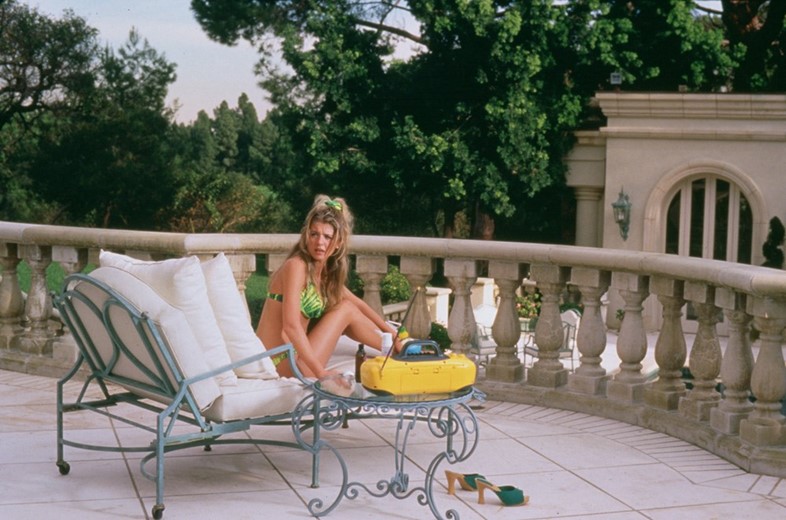
What was the Dude’s backstory in terms of costume?
Well, he lived in Venice, it was the early 90s, he wrote the original Heron Project – so he was a protester but now he’s a bit of a slacker. You could still find vintage clothing in thrift stores then, and I tried to stick to the west side and the Beach for the Dude; places where he would have shopped. That’s where I found the robe he wears in the beginning in Ralphs (the grocery store), with a t-shirt and some old 60s shorts – I figured some of his stuff he’s had for 20 years. That combination introduces the character right off the bat!
How about Jesus and his purple jumpsuit?
Jesus has got so much ego. I think the jumpsuit might have been scripted, but not the colour. I sketched this purple and fuschia ensemble with a 70s vibe because Jesus hit his prime in high school and has been dressing like that ever since. The hairnet and the long pinky nail were (make-up supervisor) Jean Black’s idea. We made the jumpsuit in 70s polyester from International Silks and Woolens. I convinced the Coens that Jesus would have had it made by an LA tailor and then coordinated the outfit with his teammates’ to contrast with the Dude’s team, which was just a mess.
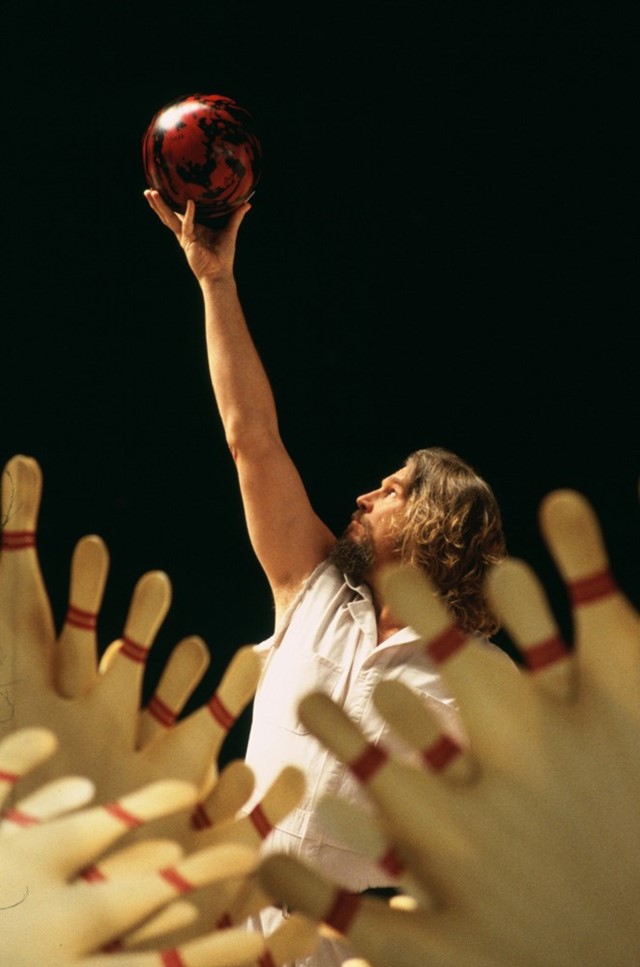
How much do you consider the symbolic connotations of colour?
Colour is extremely important – it can say a lot about a character. Walter wears colours that you would associate with the military – a lot of olive – and his fishing vest has a military feel, with pockets you could either put a fishing lure or a bullet in. The Dude’s colours are all faded out – he does laundry every two months and never separates his whites, so it’s a mish mash of muddied colour. We based Maude’s robe on a 50s leopard-print, shawl-collared coat, but that didn’t feel regal enough so we copied it in a beautiful, vintage silk velvet in green. I saved black for the nihilists – except for their dance sequence with the hooded costumes and giant scissors. I used red for that because the red ties into their album cover. So subliminally colour is factored in a lot.
What was the biggest challenge for you on The Big Lebowski?
I was most terrified about the dance number. I was young and had never done one before. There’s a crane, ten cameras, 25 dancers, and your costumes could screw it all up. The script described it as a Busby Berkeley-style dance, with bowling themed headpieces. I immediately thought of a Carmen Miranda fruit basket, but me and my assistant tried that, and it wasn’t pretty! Then we came up with flat foam bowling pins, spread like a deck of cards. When the dancers were bowing and coming back up during filming, and the headpieces didn’t fall apart, I was so relieved.
Do you have a favourite anecdote from on set?
Jeff Bridges is one of my favourite actors to work with; he’s such a collaborator. We had three very long fitting sessions but they were pure joy. He finds his character in the fitting room and he doesn’t hide it. One of my fortes is building strong characters through their clothes and oftentimes you’ve thought about the character more than the actor has at the first fitting, because that’s usually a couple of months before filming. So when you explain the clothes’ backstories, it helps them start their own preparation. That sense of collaboration, and seeing the transformation happen literally in front of the mirror, is amazing.
Where are the costumes now?
I donated all the dance sequence costumes, except one, to Palace Costumes – an LA rental house – and she still has them. The rest of the costumes were sold to the LA store It’s a Wrap, for either one or two thousand dollars – because I didn’t know any better. Now they sell to collectors for thousands!
The Big Lebowski is back in cinemas from September 24 to celebrate its 20th anniversary
If you’d like to read more about the making of The Big Lebowski, may we recommend The Coen Brothers: This Book Really Ties the Films Together, which has just been released by Abrams
